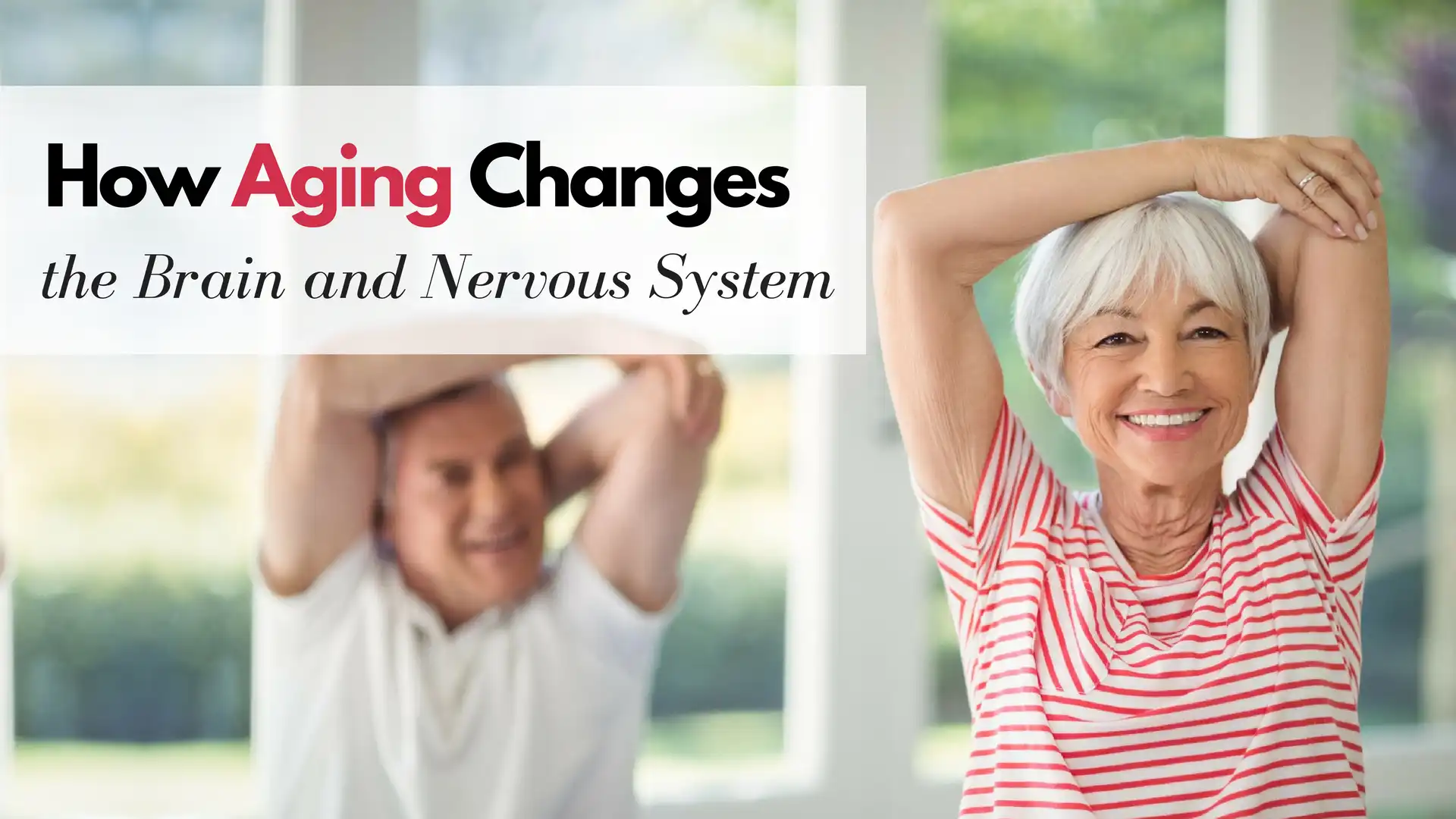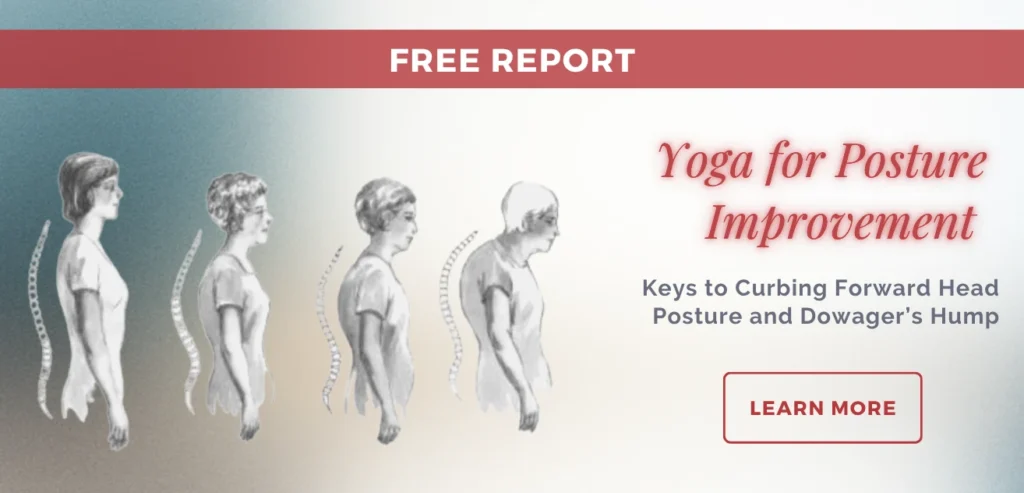How Yoga and Exercise Can Help Slow Aging-Related Changes to the Brain

As we age, our physical bodies, including our brains and nervous systems, go through changes. These changes are normal and don’t have to affect our everyday abilities to function. The good news is that in many cases, through exercise—both physical and mental—we can continue to live fully satisfying lives.
The Brain and Central Nervous System
As your brain ages, certain areas shrink in size, and as a result, the empty spaces deep in the brain called the ventricles, expand a bit. As the volume of the brain gets smaller, the neurons—the specialized cells in the brain—also shrink, as does the number of neuron-to-neuron connections, called synapses. On top of this, some of the neurons die and are not replaced by new ones.
As nerve cells break down, waste products can collect in the brain tissue, leading to new and unwanted growths called plaques and tangles. Growing both inside and outside of the brain, these growths can disrupt the communication network between the neurons. All of these changes can cause your brain to slow down and work less efficiently. You can mitigate some of these changes through practices that foster brain health, including exercise, sleeping well, and continued learning.
Inflammation:
As we age, we tend to produce more free radicals, which can lead to inflammation in the brain as well as the body (see Chronic Inflammation and Yoga for information about aging and inflammation). Inflammation in the brain can increase rates of cell death, and unchecked can lead to more severe brain issues, such as Alzheimer’s and Parkinson’s diseases. Although we don’t know for sure that you can prevent Alzheimer’s and Parkinson’s this way, you can prevent inflammation in general by focusing on stress management, meditation, and gentle exercise.
Blood Supply:
The gradual decrease in blood flow to the brain due to arteries shrinking and changes in the blood-brain barrier may decrease your body’s ability to transport nutrition into the brain and keep toxins out. All of this may contribute to an overall decrease in brain function over time. To maximize your vascular health, focus on exercises, such as a well-rounded asana practice or even a gentle asana practice, as well as on meditation, which has been shown to reverse clogged arteries.
Cognitive Abilities:
As a result of all these structural changes, the brain and central nervous system’s ability to function also changes. For example, structural changes to the prefrontal cortex and the hippocampus may cause decreases in learning, memory, planning, and decision-making; and may alter personality. This leads to a decrease in general mental abilities, such as trouble learning new things, recalling information efficiently, and keeping up with technological advances.
Although all this often leads to older people performing poorly on complex tasks of attention, learning, and memory, all is not lost. It turns out that if older adults practice these tasks, they often perform as well as younger adults. Additionally, older people often continue to improve in certain other cognitive tasks including vocabulary, verbal knowledge, and information analysis. This explains why my grandmother could whoop me at Scrabble when she was 88!
And we also know that when we are engaged in learning new activities, skills, and creative projects, the brain will continue to grow and build new neurons and neural synapses, a process called neuroplasticity. In addition to continued learning, regular exercise, managing stress levels, and participating in a community will all help foster cognitive ability as you age.
The Peripheral Nervous System
Aging brings natural changes to the nerves of your peripheral nervous system, causing them to shrink and the insulation around them to be reduced. As a result, nerve cells may pass messages more slowly between the body and the brain, causing your body to respond less rapidly and reducing your overall agility. This slowing can also affect your senses, leading to reduced or even lost sensory feedback from your body to your brain, including:
• Diminished response to touch, and to sense where you are in space and what types of surfaces your body is touching (this affects your ability to balance)
• Decreased eyesight
• Decreased hearing
• Decreased sense of smell
• Decreased sense of taste
• Changes in perception, so in some people, there is a decrease in pain sensation and sensitivity, while in some others, there is an increase.
By improving blood flow to the special sensory nerve receptors (the nerves that shuttle information back to the brain) and increasing space around your nerves, regular exercise can help support healthy senses. In addition, maintaining good nutrition and regularly resting your senses with restorative practices can also help.
Slower responses from your nerves to the muscles involved in conscious action affect coordination and speed of movement, as well as the strength of muscle response. Of course, this can, in turn, lead to movement and safety problems. You can counteract this slowing with regular well-rounded exercises, such as a well-rounded asana practice that focuses on strength, flexibility, balance, and agility.
Aging also causes a decline in blood flow in the nerves and the ability of nerves to regenerate after an injury. Regular exercise, such as a well-rounded asana practice, will help with this by improving blood flow and releasing holding patterns around your nerves, allowing them to function better.
In your autonomic nervous system, the slower messaging of nerves affects how well your brain communicates with your cardiovascular system, as well as the other organs and systems whose functions it coordinates, such as the digestive system and bladder. Slower communication can lead to less efficient functioning of all those systems, causing, for example, sluggish digestion or trouble with urination. To preserve good autonomic functioning, both regular exercise, including a well-rounded asana practice, and managing chronic stress can be helpful.
What You Can Do for a Healthy Brain
To summarize, there’s quite a lot you can do to maintain the health of your brain and nervous system as you age, including:
1. Exercise regularly. Exercise in general, and yoga asana in particular, have been shown to be one of the most important things you can do for keeping your brain and nervous system healthy, as well as the rest of your body.
2. Maintain good nutrition. Good nutrition is as important for brain health as it is for physical health.
3. Meditate. This not only improves mental functioning, such as the ability to focus and maintain willpower, but it has been shown that meditation actually strengthens the brain.
4. Sleep. Good sleep is necessary for the brain to function properly and also to keep it healthy.
5. Manage chronic stress. Reducing chronic stress helps reduce inflammation and reduces the likelihood of developing chronic conditions that negatively impact the nervous system, such as diabetes and hypertension. This allows healing time for the nervous system as well as the brain.
6. Keep learning. Ongoing learning stimulates neuroplasticity and the growth of new brain cells.
7. Join a community. Socializing and belonging to a community improves cognition as well as emotional health.
You might also be interested in this study:
How yoga affects your brain: Yoga and Meditation Can Change Your Brain New Study Suggests.
Would you like to learn more? Study with YogaUOnline and Baxter Bell, MD – Yoga and Your Brain: A New Formula for Healthy Aging.
Reprinted with permission from yogaforhealthyaging.blogspot.com
 Baxter Bell, MD, is a yoga teacher and educator, physician and medical acupuncturist. These days he focuses on teaching yoga full-time, both to ordinary students of all ages and physical conditions and to the next generation of yoga teachers, to whom he teaches anatomy and yoga therapy along with his accessible, skillful style of yoga. Baxter brings a unique perspective to his teaching, combining his understanding of anatomy and medicine with his skill at instructing people from all walks of life and all levels of ability. Baxter is the co-founder and writer for the popular Yoga for Healthy Aging blog, where he shares his knowledge of medical conditions, anatomy, and yoga with practitioners and teachers across the world. In addition to being a frequent presenter at Yoga Journal Alive events and yoga conferences such as IAYT’s SYTAR, he is often quoted as an expert on yoga and health by major national news outlets such as The Washington Post and Wall Street Journal. To learn more, visit www.baxterbell.com, www.yogaforhealthyaging.blogspot.com, and his YouTube channel Baxter Bell Yoga.
Baxter Bell, MD, is a yoga teacher and educator, physician and medical acupuncturist. These days he focuses on teaching yoga full-time, both to ordinary students of all ages and physical conditions and to the next generation of yoga teachers, to whom he teaches anatomy and yoga therapy along with his accessible, skillful style of yoga. Baxter brings a unique perspective to his teaching, combining his understanding of anatomy and medicine with his skill at instructing people from all walks of life and all levels of ability. Baxter is the co-founder and writer for the popular Yoga for Healthy Aging blog, where he shares his knowledge of medical conditions, anatomy, and yoga with practitioners and teachers across the world. In addition to being a frequent presenter at Yoga Journal Alive events and yoga conferences such as IAYT’s SYTAR, he is often quoted as an expert on yoga and health by major national news outlets such as The Washington Post and Wall Street Journal. To learn more, visit www.baxterbell.com, www.yogaforhealthyaging.blogspot.com, and his YouTube channel Baxter Bell Yoga.



